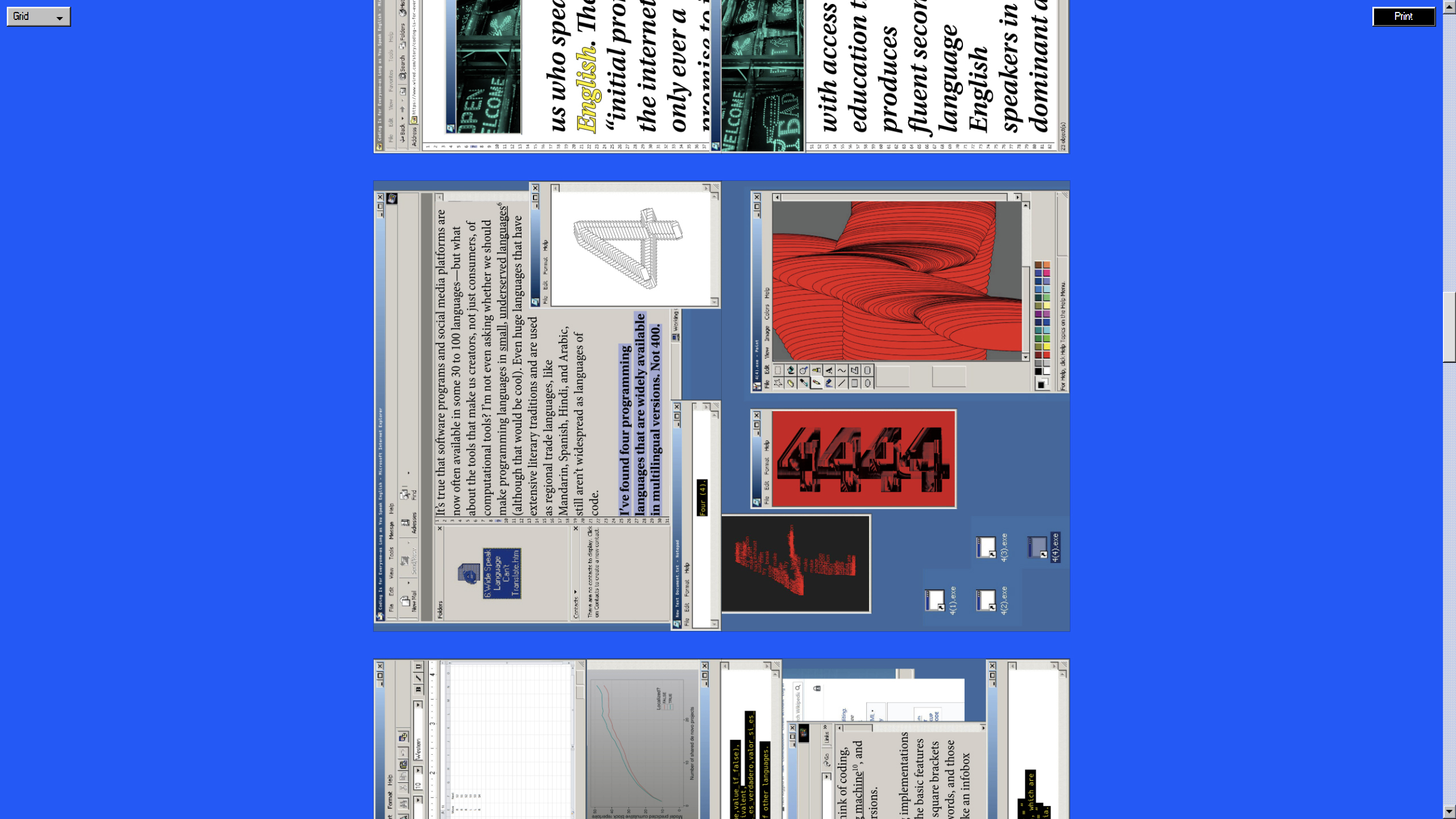Coding Is for Everyone—
as Long as You Speak English
as Long as You Speak English

Printed and web publication that engages with the field of inclusive coding through the lens of socio-linguistics.
With pseudo-archaeological excavations of the early history and exploration of the intersecting social and political contexts around programming languages from internet linguist Gretchen McCulloch, alongside the critical analysis of typographic structures and systems in the creative rise of Internet nostalgia, the publication invites readers to reflect on the linguistic dominance of English in programming.
Role
Editorial & Web Designer, Developer
Instructor
Shiraz Abdullahi Gallab, Daniel Shiffmam
Timeline
Oct 2021, Dec 2023
Website PDF
With pseudo-archaeological excavations of the early history and exploration of the intersecting social and political contexts around programming languages from internet linguist Gretchen McCulloch, alongside the critical analysis of typographic structures and systems in the creative rise of Internet nostalgia, the publication invites readers to reflect on the linguistic dominance of English in programming.
Role
Editorial & Web Designer, Developer
Instructor
Shiraz Abdullahi Gallab, Daniel Shiffmam
Timeline
Oct 2021, Dec 2023
Website PDF

